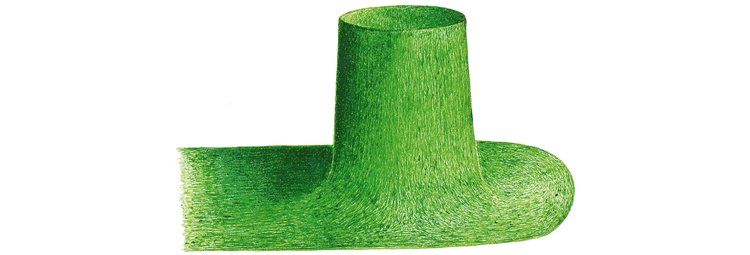There’s a study behind every urban planning improvement project. Yet how does one effectively analyze that complex entity we call a “city”? This column will explore the technological and conceptual devices that planners and others use to do just this.
The French architect Le Corbusier used to say that he preferred drawings to photos. “To draw oneself,” he explained, “to trace the lines, handle the volumes, organize the surface…all this means first to look, and then to observe and finally perhaps to discover…and it is then that inspiration may come.” He even frequently produced sketches after taking photographs, because it helped him focus on the process of design, where innovation took place.
I recently attended an exhibition at the Arts Décoratifs Museum in Paris that brought Le Corbusier’s statement to life. Titled “Drawing Design,” the exhibit presented the sketchbooks of major furniture designers alongside quotations illuminating their significance. One might think that abstract sketches would be ancillary to the finished product. But, in fact, drawings — even doodles — are vital to the process of design. Sketching is as much exploratory and reflective as it is a crystallization of nebulous thoughts; it plays a role not only in communicating ideas but also in generating them. “Drawings are inspirational and exploratory,” one designer explained, “like taking a walk on paper.”
The figures included in this exhibit described their sketchbooks as intimate “diaries” that helped them connect with the essence of their material. This personal connection was only enhanced by the use of sophisticated computer programs, such as Cinema 4D, which helps designers produce forms that they could never do without the aid of technology. Drawing, even with the aid of computers, was crucial to innovation.
Walking through the exhibit, I wondered if these statements would hold true for urban planners and architects. Are present-day professionals in these fields as enthusiastic about drawing as Le Corbusier was in the early to mid-twentieth century? What role does sketching play in attempting to understand and solve urban problems today? As we will see in the next column, in the contemporary climate, drawings play a crucial role in constructing an argument or narrative about how to solve urban predicaments. In other words, more than instruments for reflection, they are also tools of persuasion.
For questions about this piece, or suggestions for future columns, please contact Jeanne Haffner at streetsciencenac@gmail.com. The author would like to thank Roxana Vicovanu and Aurell Taussig for their contributions to this article.









